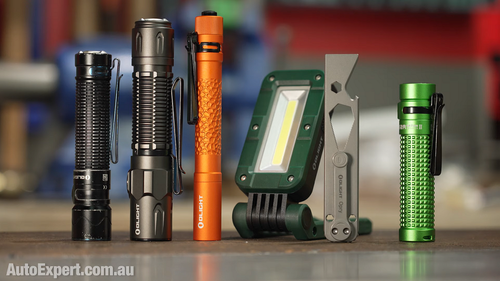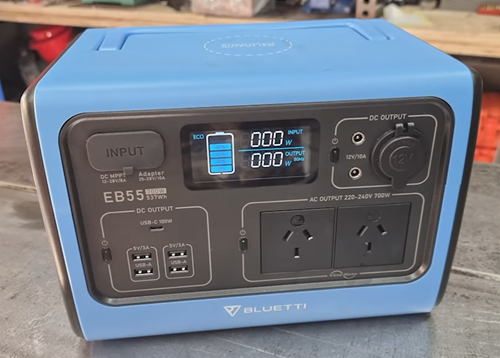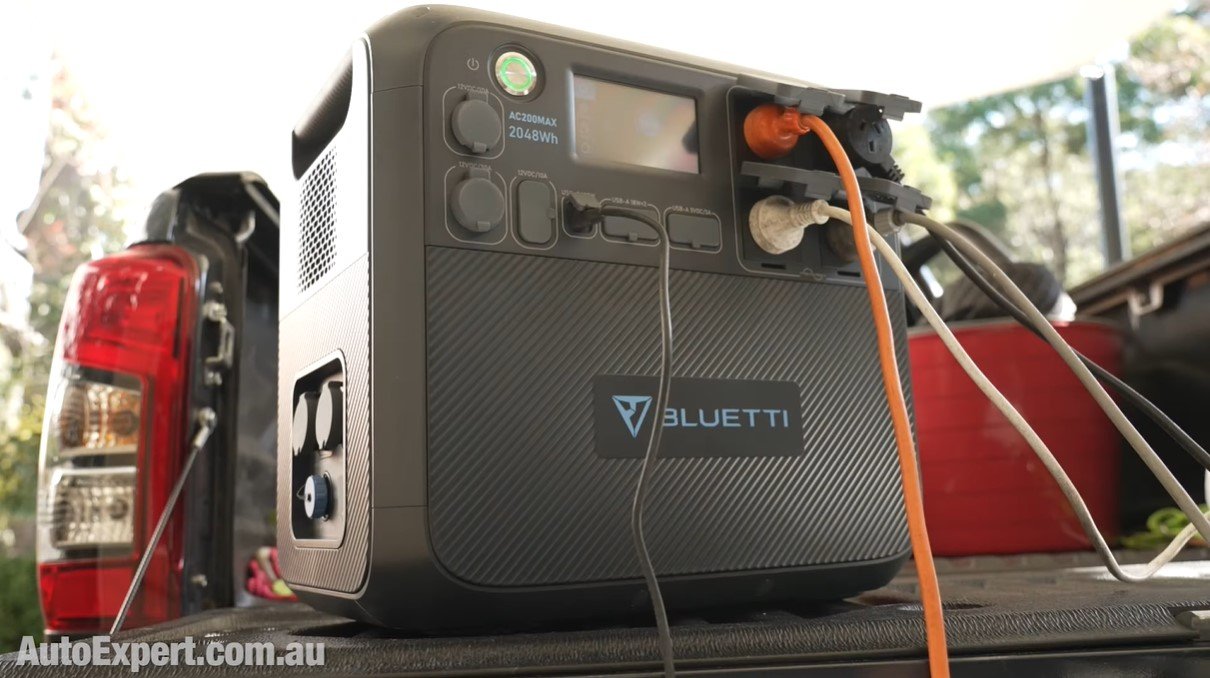DEATH TRAP UTES? Navara, Prado, Triton and Pajero Sport to lose ANCAP safety ratings
Safety ratings agency ANCAP has just had a website makeover. But, unwittingly perhaps, they may have created the next safety related new car buying disaster which you need to know about...
The AutoExpert inbox got this delightful press release the other day from my very good friends at ANCAP:
It's exactly the same way. You just go to the website. It looks a bit better, slightly.
ANCAP.com.au and ANCAP.co.nz in New Zealand, apparently now
offers new tools to enhance search functionality enabling visitors to quickly and easily view safety ratings for over 830 new and used vehicle models.
It's both of those things - quickly and easily.
This is fantastic news, so I went to ANCAP.com.au and prepared for that state of mind that you need in this situation, tumbling down the rabbit hole of investigating further.
The first vehicle that hit me was the… Opel Mokka.
Small problem: it's not on sale here.
There's not actually two websites at all - it's not ancap.com.au and ancap.co.nz - it's the same freaking website with the different alias depending on where you are geographically. Yet you still see irrelevant crap in either one.
Would it be that hard to distinguish between models on sale in New Zealand and models on sale here in Australia? Surely there is geographic data associated with the IP address of most users. So could we not filter it so that somebody doesn't get really confused over the Opel Mokka, only to have their hopes dashed by virtue of it not being in a single showroom here?
Now, the CEO of ANCAP, who according to her LinkedIn profile has no automotive experience whatsoever - except for the past almost two years at ANCAP - she said (deep breath):
Nearly made it in one breath. How about you?
That was an amazing 87-word sentence. The big question is whether she took a breath. I wonder if she actually said that exact statement. It might have been a nice idea to split it up into digestible chunks with full stops and stuff.
Anywho, I’d suggest to consumers out there that all cars bigger than a Kia Picanto can actually accommodate a pram and the groceries. It’s actually not that hard.
The ANCAP CEO continued on, which you might find quite interesting, as I did:
The ANCAP website is far more than just a platform to search for safety ratings. It provides a wealth of information, allowing users to better understand (sic) vehicle safety features and learn what and how we test.
I disagree. The ANCAP website is still just a catalog of safety ratings and kinda vague self-justification designed mainly to look virtuous and therefore help to secure the next all-important round of government funding. That's what they're really here for, as I see it.
Fair to say, I’ve been critical of the ANCAP rating system over the years, and despite the overall modernisation, there’s still an incoming problem.
My AutoExpert AFFORDABLE ROADSIDE ASSISTANCE PACKAGE
If you’re sick of paying through the neck for roadside assistance I’ve teamed up with 24/7 to offer AutoExpert readers nationwide roadside assistance from just $69 annually, plus there’s NO JOINING FEE
Full details here >>
AutoExpert DISCOUNT OLIGHT TORCHES
These flashlights are awesome. I carry the Olight Warrior Mini 2 every day - it’s tiny, robust, and super useful in the field or in the workshop. Olight is a terrific supporter of AutoExpert.
Use the code AEJC to get a 12% discount >>
Generators suck! Go off-grid with AutoExpert BLUETTI PORTABLE POWER STATIONS
Need mobile, reliable power? If you’re camping, boating, caravanning or building a dirty big shed in the back paddock, and you need to run a refrigerator, lights, air conditioner, cooking, and/or a bunch of tools - Bluetti has a clean, tidy, robust solution…
Get your AutoExpert free shipping discount here: https://bit.ly/3n62heK
YOU SHALL NOT PASS, MATE
The biggest change to ANCAP is that it will be rescinding the star ratings. Essentially, it's a use by date on the star ratings which starts from the year of crash testing plus six years - they expire.
The first round of expiring is going to happen on the 1st of January 2023 - just two months away. But the problem with that is you have to manage it when you change a system fundamentally.
I am on-board with shitbox Volkswagen Amarok losing its absurdly, manifestly irrelevant safety rating from 2011. Two thumbs up, because current Amarok would be flat out getting two stars now.
Why you should not buy a Volkswagen - especially an Amarok >>
It's a great concept. Vehicles should not be able to hang on to their five-star rating indefinitely, because it sends a flawed picture to the market about what ‘five stars’ actually means. Amarok was the best back in 2011, but things have moved on. Thankfully, ANCAP is also doing that. Congratulations.
However, there’s a problem. See, in the context of the current automotive stock shortages, on the 1st of January, there's a batch of vehicles which will lose their five-star ratings but will remain the current vehicles still on-sale. These vehicles, 2023 Toyota Prado, Volkswagen Amarok, Mitsubishi Triton and Pajero Sport, Nissan Navara are going to be part of this date-rating problem, as I understand it.
You can foresee the scenario where a customer has ordered their vehicle mid-2022, they're really looking forward to getting this car as promised by Christmas, but the dealer has just informed them it’ll be more like the first quarter of 2023 before they see their new vehicle.
So here’s what could happen to you.
If you're a contractor who goes into other big businesses, such as primary and secondary industry like construction, mining, processing plants, these big heavy industries, and you might be an air conditioning mechanic or some kind of sub-contractor required to drive on-site, often the parent company that owns the whole operation has this tight focus on safety.
Typically, only five-star vehicles are allowed on-site. If your vehicle is slated for delivery in December 2023, for example, then that's okay because it'll be five stars. You might have a Mitsubishi Triton on order, but it could be a Toyota Prado, a Volkswagen Amarok, Nissan Navara or a Pajero Sport - some kind of late model based on an aging platform.
You might have ordered that vehicle way back in March, April, May of 2022 in preparation for 2023 - because you knew of the stock shortages and tried to plan ahead. You’re now sweating on it by Christmas in order to start the new year and do your contracting thing in a new vehicle.
Still shopping for you next tradie workhorse?
The truth about Mitsubishi Express and its zero-star safety rating >>
2022 Hyundai Staria Load van review: Buy this or a Toyota Hiace? >>
Well, that's going to be fine if delivery happens on or before the 31st of December. But if the dealer rings you up two days before Christmas and says it's going to be two more weeks, and delivery does not take place until the first week of January you're stuffed. That vehicle is no longer five stars and these businesses with these safety policies about five stars are strict.
Never mind that it's the same car. They don’t care if it's got the same safety features and protects you just the same irrespective of the delivery date. From a purely bureaucratic and administrative point-of-view, that new vehicle will be unrated and therefore not compliant with that umbrella organization's policy.
This is a major hurdle between you and earning your income. All of these features and benefits they promote, and positions that ANCAP occupies as the independent voice of safety, yet I haven't heard anything from them, no advice to major industrial operators about the management of this process. Especially in the prevailing market conditions, whereby consumers who could have been waiting for their vehicle for nine months, could be expecting it by Christmas but won’t have it until it’s too late and therefore can't bring it on-site.
This is what happens when these bureaucrats don't think about the practicalities of the processes they come up with. Makes you wonder if ANCAP bothered to consult with any major stakeholders, or if they just tried to figure out a way to fix their botched, eroding rating system and implemented this without wider consideration.
if you're missed a small business or you're a self-employed trade of some kind, how are you going to get around this problem and how will it affect you? Let me know if you are that person desperately hoping your car will be here before the 31st of December.
The OH&S officer in your standard inland mining site may treat your new ute as some kind of demonic beast straight from hell.
One final point.
In the bad old days I used to be a real supporter of ANCAP because they didn't actually have a proper five-star rating system. It was binary: there was only five stars or death trap, because four, three, two, one or zero stars was actually a death trap. That's how it was in the early and mid-2000s.
But that's not how it is now. Four stars is actually pretty good and I think fleet operators need to acknowledge that and they need to change where the bar is for acceptability for their fleets, because in the current system, I'd have no hesitation owning a four-star car. It would be safe enough. I'd have a look at it see how it crashed and if it didn't have one or two of these ‘advanced safety features’ - the crash avoidance ones where, let's face it, if you just pay attention, you don't need half of them. If it just had that, I'd accept that and be happy.
By comparison: Jeep Wrangler is a three-star deathtrap: here’s why >>
The other thing you need to realise is that ANCAP is really just cloning EuroNCAP’s testing results. EuroNCAP has this process, ANCAP replicates it and the results for vehicles that we get here. There's some engineering interpretation done, obviously, in terms of the spec of those vehicles and any fundamental underlying differences, but in terms of the fundamental crash evaluation, most of that if the vehicle is available overseas and is tested by EuroNCAP. ANCAP doesn't test it if EuroNCAP already has, generally speaking. They just lunch off the results and the protocols which are exactly the same.
So how the hell can four stars be a different thing in Australia than it is in the EU? That's my question for ANCAP.
Here's what EuroNCAP says about four stars:
Overall good performance in crash protection and all round additional crash avoidance technology may be present…
That means the car did pretty well and it might have a bunch of those advanced safety crash-avoidance type features.
Here's what Australia’s ANCAP says:
Four-star safety provides an adequate level of safety…
‘Adequate’ means satisfactory or acceptable. Okay, I'm happy with that, so far.
…provides an adequate level of safety performance, yet fell short in one or more key assessment areas, may present a higher injury risk to occupants and or other road users in certain scenarios or have a reduced ability to avoid a crash.
Same protocols, same results, different interpretation.
So who's messing this up? If I was an employee and went for an annual performance review and somebody reviewed my performance, and they said, ‘Overall, good. You did your core tasks in an overall good and all-round adequate manner, with the occasional rise in potential.’ That’s a reasonably upbeat assessment of your job performance.
But if they assessed me to the same standard, but instead told me I was, ‘Adequate but you fell short in one or more key areas and you may represent a higher risk to the business and or customers in certain scenarios,’ I would be thinking this job is probably not for me, despite being rated according to exactly the same set of criteria.
Case in point: How ANCAP botched Hyundai Palisade four-star safety rating >>
It's an insane interpretation. How can you have an ‘adequate’ level of anything and yet ‘fall short’. It sends the wrong message.
How can you use the same protocols, exactly the same testing system and scoring system, and yet interpret it so differently?
As I understand it, ANCAP has been spending the past few months telling everyone who will listen that four stars is not good enough, and I absolutely don't understand. That is not the system that was designed by EuroNCAP or implemented or contextualized for the public by EuroNCAP - that's not what their system says.
If you're a fleet manager or a contractor in the domain of occupational health and safety - four stars is good enough. It's good. The progenitor of this rating system describes four stars as ‘good overall’, ‘good performance in crash protection and all round’.
The fact that that is not the case here in Australia is disgraceful. The Occupational Health and Safety Act, of course, does not say that all risk needs to be eliminated. It just basically says that risk needs to be effectively managed to the extent that' is feasible.
I'd suggest that four stars is an example of effectively managing the risk of being in a vehicle, to the extent that is feasible in the context of business operations.
Let me know how you're going to feel if you are getting one of those vehicles that's about to lose its five-star safety rating and, but for the grace of one week of administrative bullshit, your vehicle is potentially no longer allowed to be on site at your clients’ premises. How the hell are you going to get around that?














